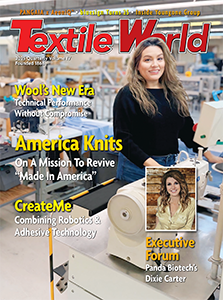TROY, Mich. — June 18, 2018 — Inteva Products LLC, a Tier One automotive supplier of engineered components and systems, received the top prize in the 2018 Innovation Awards presented by the European Association of Automotive Suppliers (CLEPA) at The Hague, the Netherlands, on June 13.
Inteva was recognized for its new real-time scanning process for the robotic stitching of automotive interiors. This innovative technology will be used on instrument panels for the 2019 Chevrolet Silverado and GMC Sierra pickup trucks.
The new process enables live scanning and immediate adjustments to the program path of robotic stitching equipment as a component is being stitched. This approach aligns leading-edge advances in the use of lasers in automotive manufacturing with Inteva’s unique robotic stitching technologies. The advancement reduces the average cycle time of a stitched surface by approximately 20 to 30 percent.
The 2018 CLEPA Innovation Awards, organized in cooperation with Deloitte, celebrate automotive excellence in the categories of Environment, Safety, Connectivity & Automation and Cooperation. Inteva was recognized in the “Cooperation” category with its customer General Motors.
“We are proud to receive this recognition,” said Inteva Products CEO and President Lon Offenbacher. “The real-time scanning innovation was a true collaborative effort between the talented women and men of Inteva and our customer General Motors, so we are especially honored to be recognized in the Cooperation category.”
Posted June 18, 2018
Source: Inteva Products LLC




